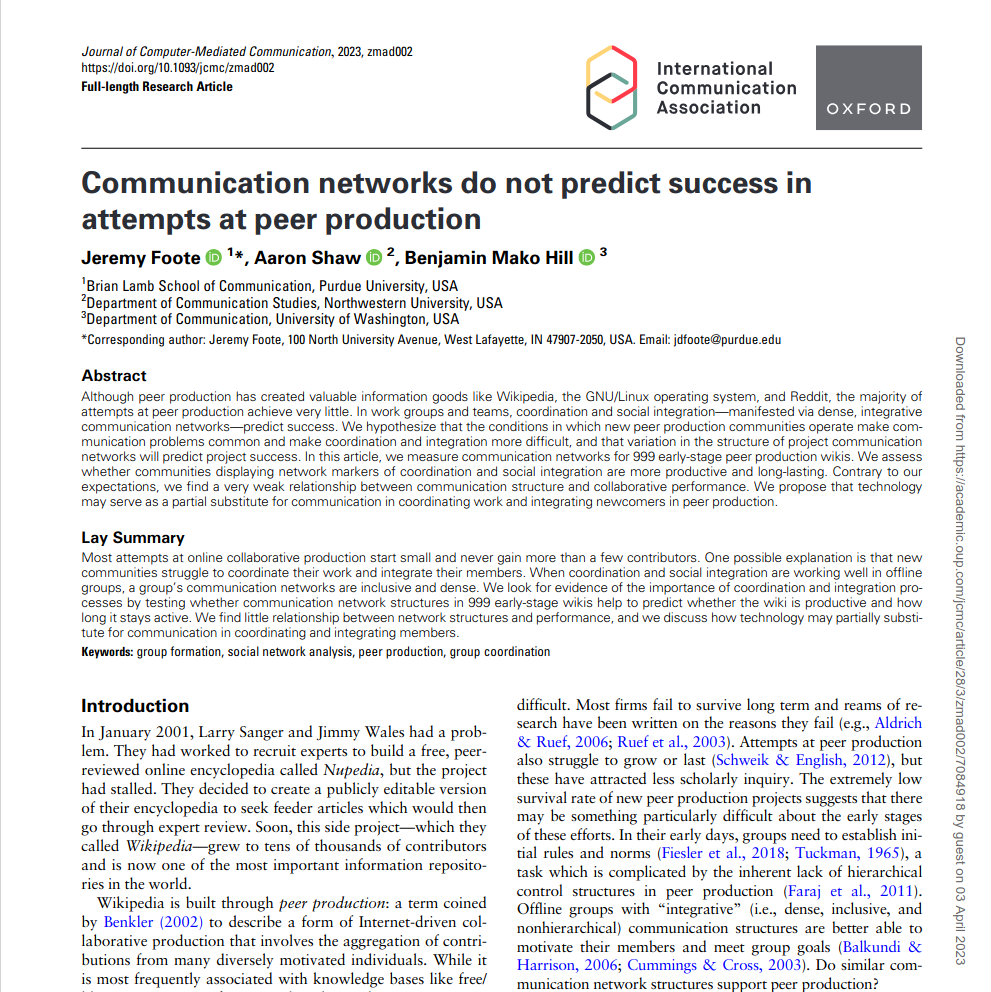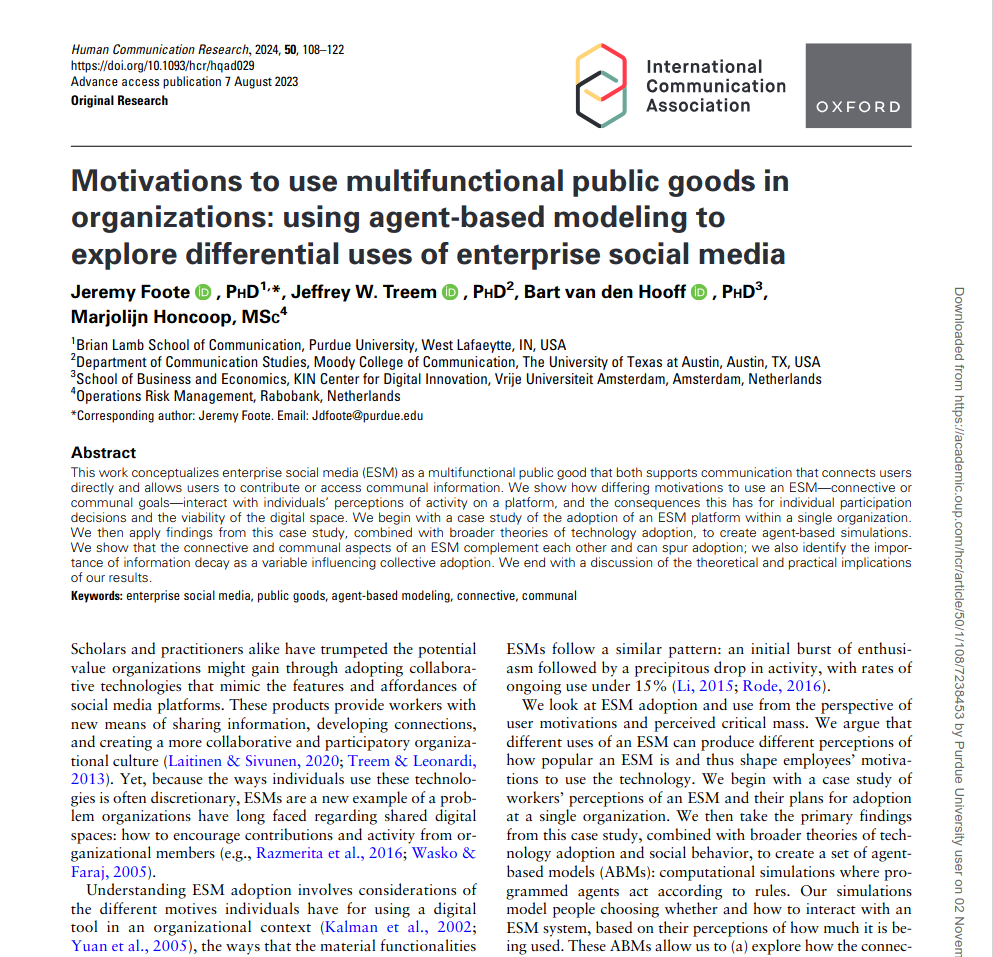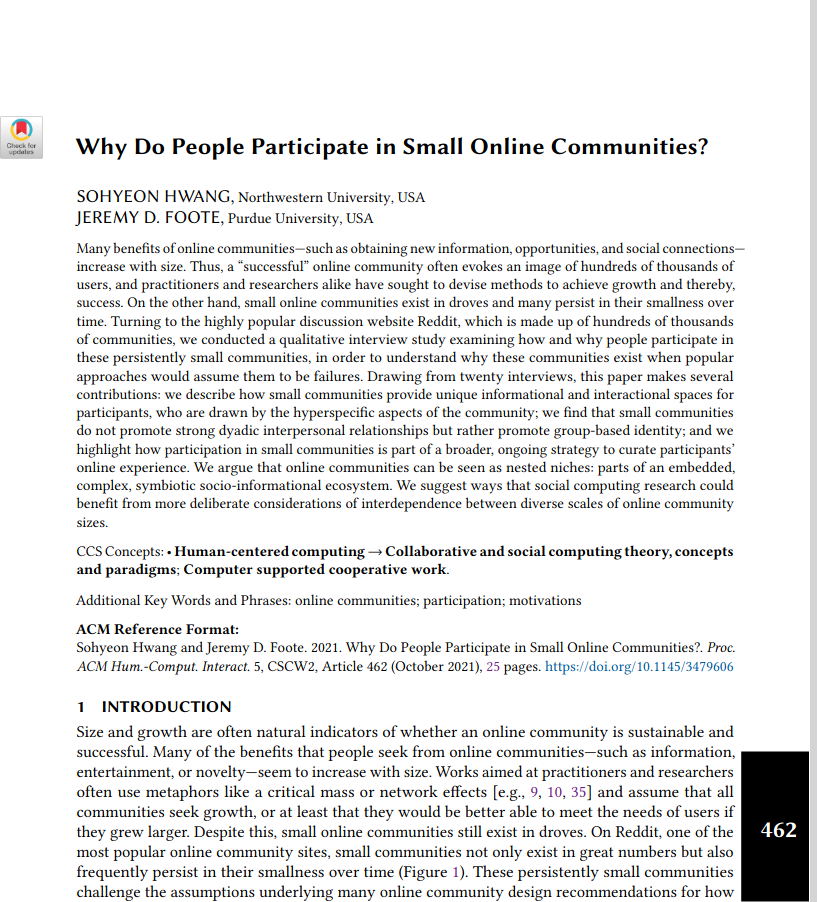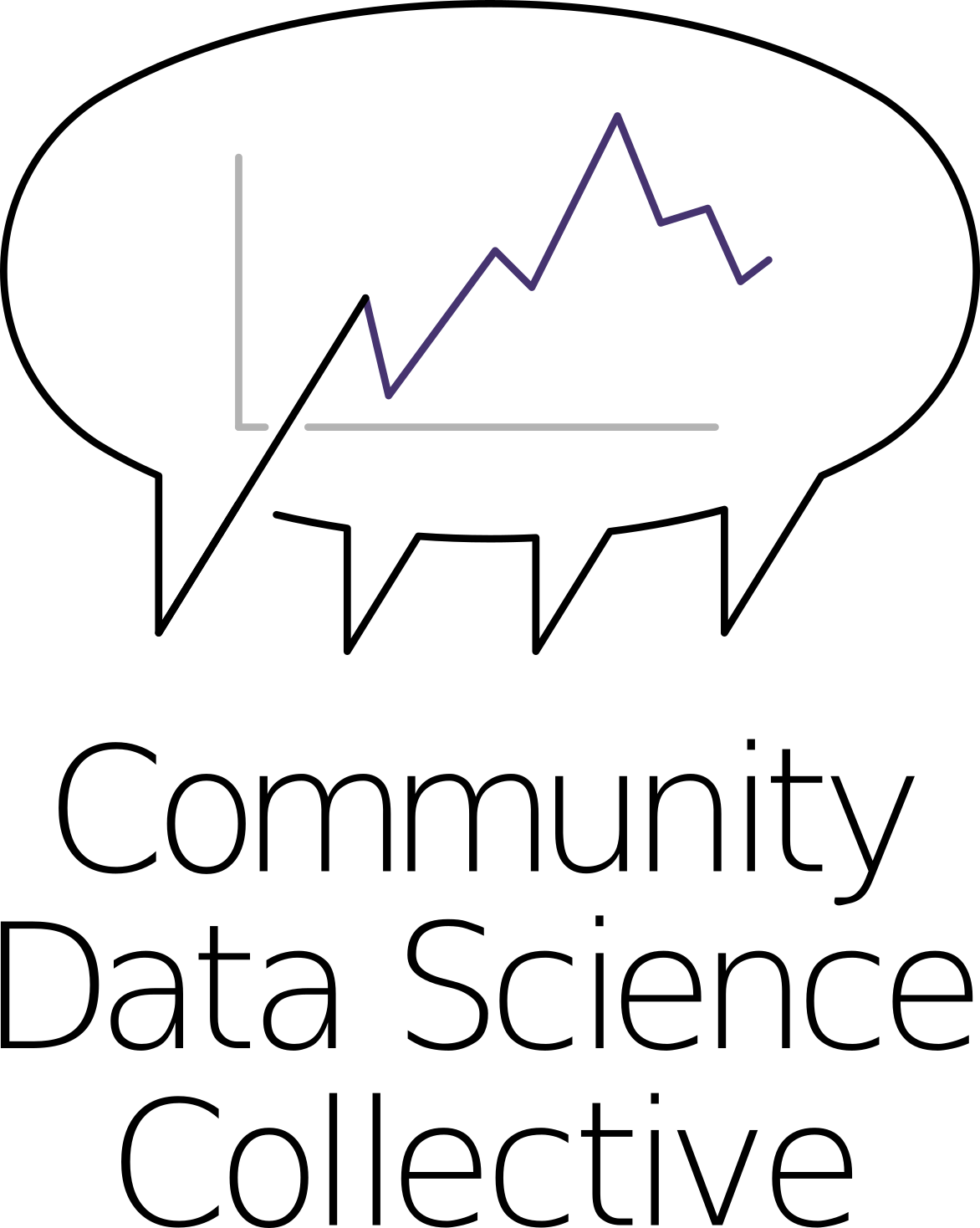```{r setup, include=FALSE} knitr::opts_chunk$set(echo = FALSE) knitr::opts_knit$set(root.dir = './') source("resources/preamble.R") ``` Understanding the emergence of new and small online communities

Jeremy Foote
Purdue University The efforts of devoted founders?
Integrative early networks? The efforts of devoted founders?

Attributes of the information space? Integrative early networks? The efforts of devoted founders?

Benefits of smallness? Attributes of the information space? Integrative early networks? The efforts of devoted founders?






